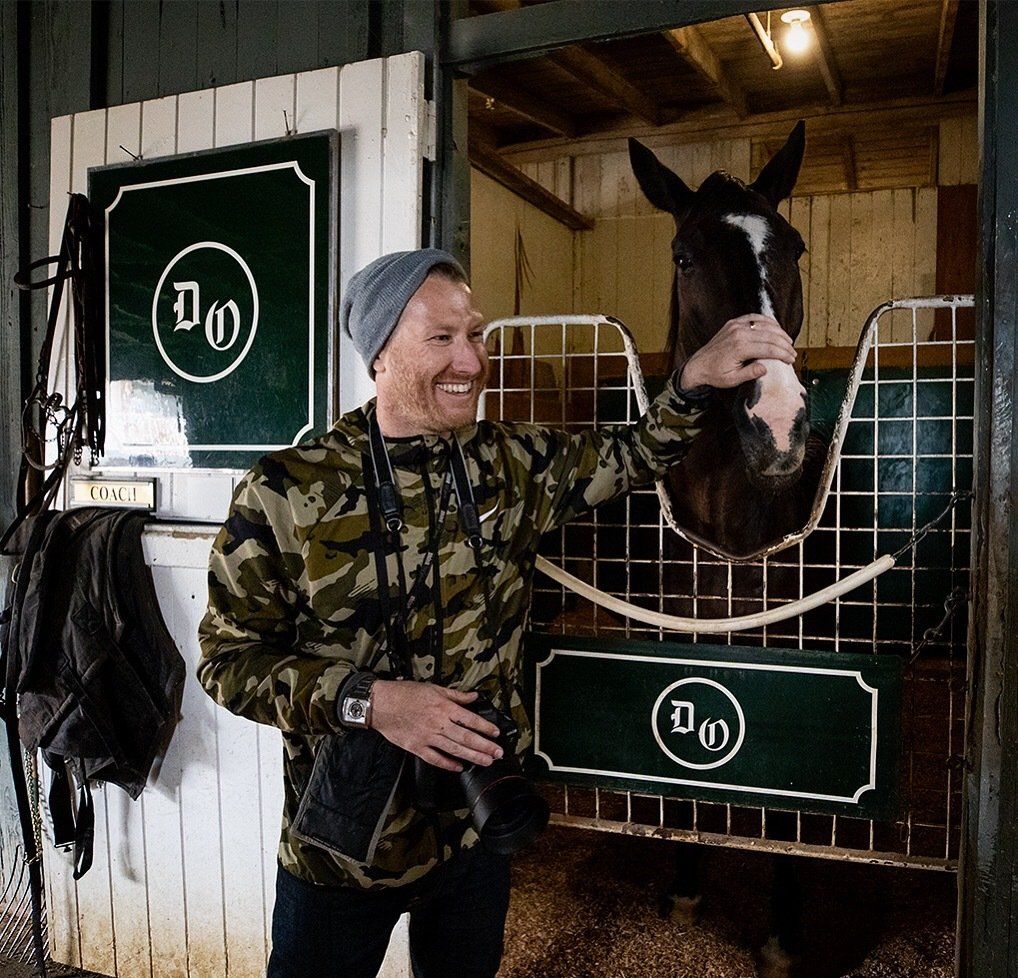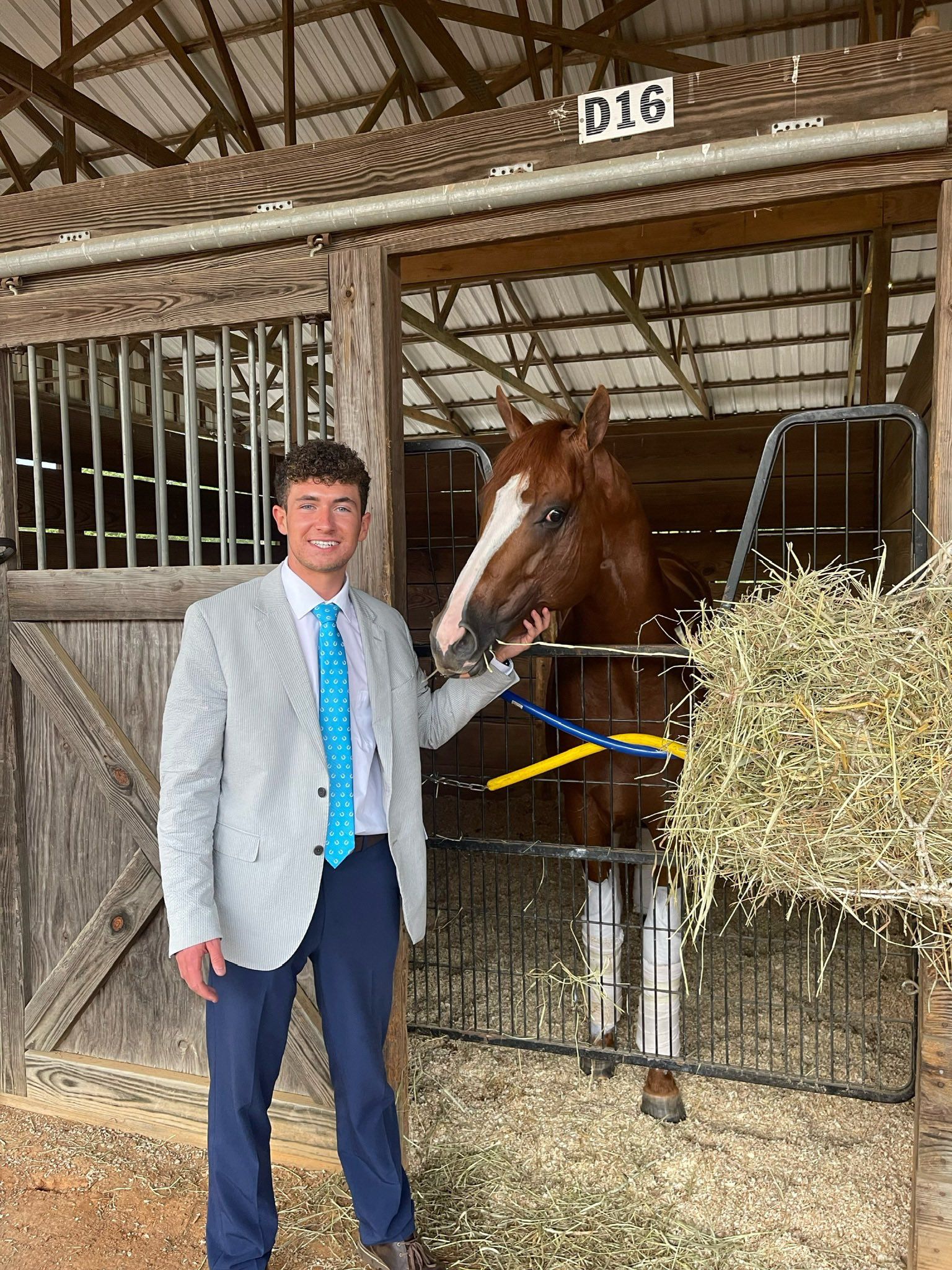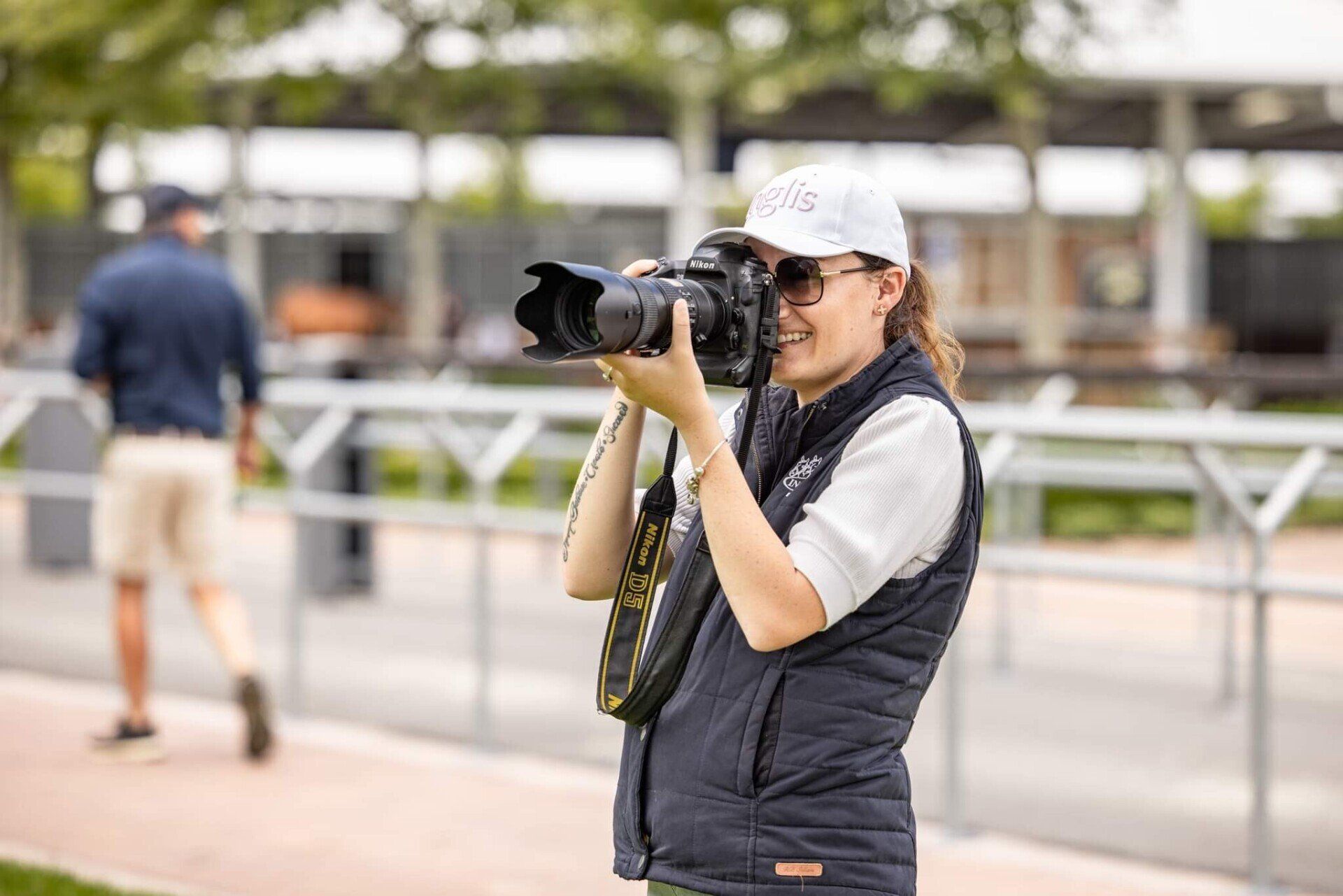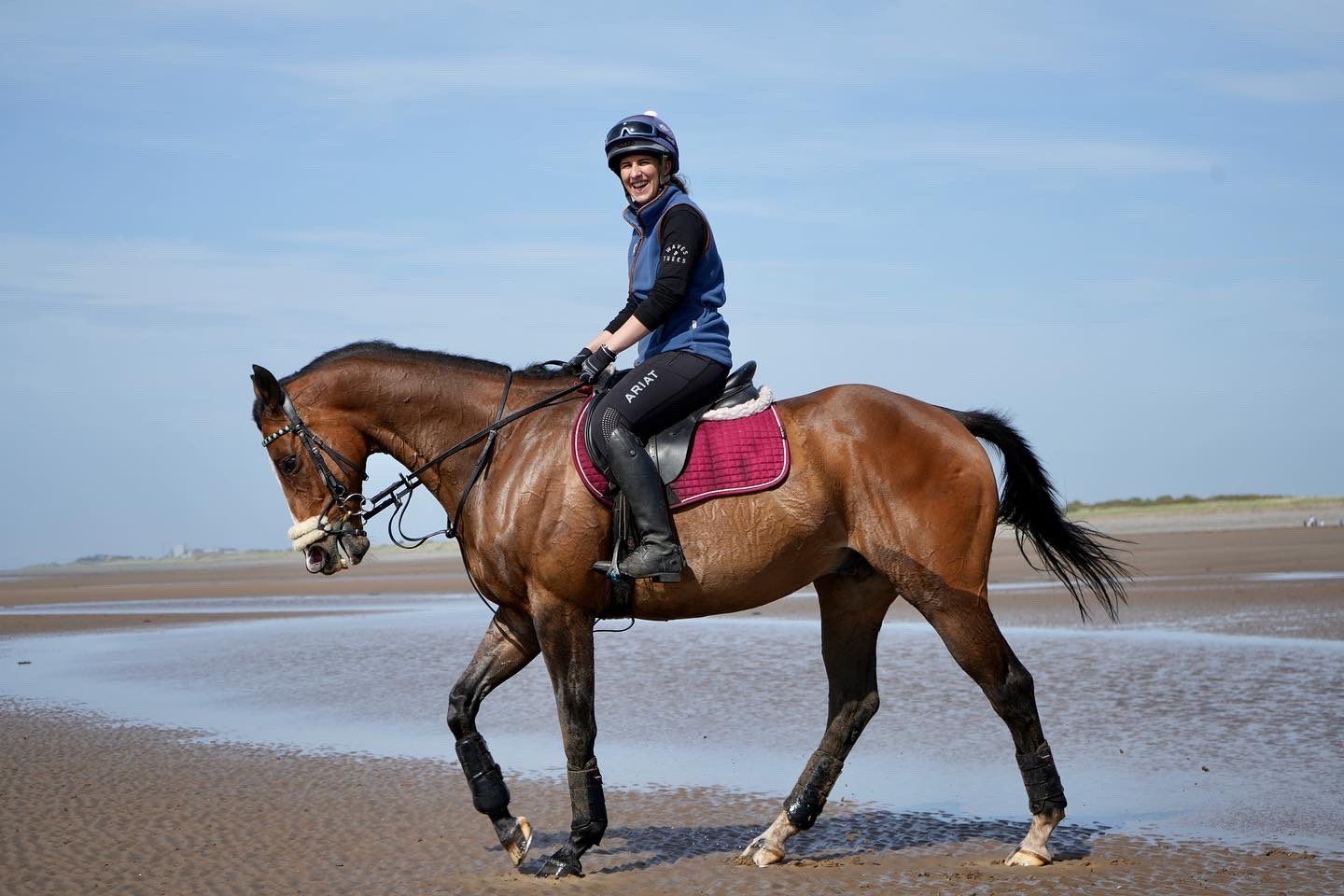Q&A with Alex Evers
Known for his outstanding Eclipse Award-winning photography, Alex Evers has become a familiar name for those in horse racing.
Alex grew up in a family who enjoyed watching racing so much that his father wanted to name him Alydar. Following the sport closely and going to the track growing up, Alex knew he wanted to find himself a career within the industry. Knowing he was too big to ride, Alex opted for playing hockey and headed for the University of Arizona, where he was enrolled for just 21 days when he realized he would rather be at the track. Alex left university, got himself a camera and never turned back.
Q: When and how did you get involved in horse racing?
A: My earliest memories are sitting on the couch with my parents watching the 1987 Kentucky Derby. My old man really wanted to name me Alydar, and thankfully my mom talked him out of it. Not that I didn’t like the name; I didn’t want to be named for a horse who ran second throughout the Triple Crown. So they went with Alex and they called me that as a nickname. I was mesmerized when Alysheba nearly fell at the 1/8th pole, re-rallied and won the race. That started my love for racing. My grandmother made me replica silks of his, and I would wear them to the track and bother Chris McCarron to autograph anything and everything. He always obliged. Two years later, Sunday Silence cemented my love. I followed him and his story closely, even when he went to Japan. I just loved the East Coast/West Coast rivalry. I always followed the sport, drew pictures of my favorite horses, clipped out news paper photos, but never thought I would be a photographer. As I got older I was too tall to ride, so I played hockey instead, then I wanted to train. I went to University of Arizona for all of 21 days and couldn’t see myself training going to school there. My folks were devastated that I wasn’t going to UofA anymore, so I went to the track. It's my happy place.
I bought a 80-200mm film lens for an old 1984 AE1 Program and taught myself how to shoot slide film and manually focus. I then got a really modest Fuji point and shoot spring of 2003. It was so slow you couldn't take racing action pics… you would push the shutter and it would take a picture 1.5 seconds later, that kinda slow. But I got it to take pictures of Dance in the Mood, Sunday Silence’s first daughter to come to the U.S. for the American Oaks. I was working at a bank at the time, got a decent bonus and against the will of my parents, I bought my first real digital, put together a small portfolio and shot my first professional race Memorial Day 2005, The Shoemaker Mile. Got my picture in the Racing Form and the rest, as they say, is history.
Q: What made you want to become a photographer?
A: It was easier and faster than drawing a racing scene. So the summer of 2005 at Del Mar, I ended up working with my mentor, Michael Marten. I had idolized his work in the Racing Form and I just wanted to learn anything and everything. Day one of the meet, I introduced myself and told him I’d do anything he needed to help, I just wanted to learn. He taught me so much—he taught me how to edit, he taught me remotes cameras and how they worked. I assisted him at the 2006 Derby with remotes, and at that point I realized I wanted to do this for real. I loved the idea of putting cameras in places I physically couldn’t be. I loved the idea of strategizing a race, trying to find where the best action was going to be. It was like handicapping and betting with my art. Something I don’t really talk too much about, but I love the high risk, high reward type of shots. I think it comes from playing the horses as a kid.
Q: What was the first camera you used?
A: AE1 Program, but I’ll tell you gear is great, but it’s all the operator behind the camera. I’m still using cameras that are over 12 years old; I have lenses from the 70s and 80s I still use.
Q: Do you or did you have a favorite horse to photograph?
A: There have been so many that I loved photographing. I made some really special images of Zenyatta. Justify’s Triple Crown run, I started photographing in February that year and documented his run well. Arrogate was special, I had some special moments photographing him that I’ll cherish, but my all time favorite is Beauty Generation. He meant so much to my career. I took a photo of him after winning the 2017 Hong Kong Mile where Derek Leung reached up, grabbed his blinkers and kissed him. That frame got me a gig shooting Hong Kong’s biggest races. In April of 2018, he worked before the Champions Mile, and the trainer circled him on the track with the grandstand and the high rises behind him, asking the photographers if this worked for their shots. I had made my way down onto the turf course, shooting low angle up at him, something I don’t really recommend doing. He gave me this look, as if to say, “This is my track. This is my domain, I’m letting you take this photo. If I wanted to, I could kick you.” It was just a special moment I’ll never forget, and a horse to this day that I absolutely love!
Q: You’ve traveled to many different tracks, do you have a favorite to shoot at?
A: There are so many tracks that are picturesque, and each have such unique features. Mornings at Santa Anita are unreal with the sunrise and the mountains. Same with the Oklahoma Training Track at Saratoga where it looks like heaven as the horses appear through the sun and mist. I love the challenge of shooting at a track like Del Mar, which has the giant video board and insane sunlight bouncing off the Pacific Ocean.
You’d never guess, but my favorite track to photograph is Sha Tin, in Hong Kong. I love the high rises in the distance. I love the challenge of shooting turf races with 14 horses handicapped to finish on the line together. I love the jockeys reacting and interacting with the fans, and the people in Hong Kong are incredible—they love racing and they love the art that I have created. It was wild there, taking pictures with fans, having fans take pictures of your every move just as if you are a celebrity like a jockey. I just haven’t felt that love anywhere else in racing. The pressure that comes with that adulation is great because it makes me want to elevate my game. As a photographer, HKJC is a dream client. Just go out there and make beautiful racing art. When I have that freedom to operate, my work excels—it’s way more fulfilling than sitting in one spot all day and shooting 14 races. Also, I have a brilliant relationship with the stewards there and was working on some new things that people hadn’t seen before, until Covid. I'll make it back one day! I dream about it nightly. The one that got away.
Q: If you could do photography at any track in the world, where would you go?
A: I really want to go to Japan and photograph the Arima Kinen or the Tōkyō Yūshun. Ascot is for sure on the bucket list, as well as Newmarket and Chantilly. The thing I really want to photograph is the horses training on the beach in Australia. It reminds me of growing up, seeing the horses at the beach in Del Mar. I would have loved to photograph that. One of the things I’ve always wanted to do was make a coffee table book of my photos of tracks around the world. Maybe one day!
Q: Many people think photography is just point and shoot, but it’s much more than that. How long would you say you spend editing your photos?
A: I spend way less time editing than I do planning and studying races. For instance, I'll watch hundreds of replays to see where guys celebrate, how guys react to try to plan my remote cameras or my physical position. I try to run through all the scenarios of a race so that mentally I’m prepared well before the race starts. Because I came from an advertising photography background and I didn’t always have the best gear, I shoot not to crop. The early digital cameras didn’t have the pixels these new cameras have so you had to get exposure and crop right in camera. I've taken that with me. With my remotes, I try to compose full frame, same with the handhelds so that I have the biggest and best files. That means shooting tight and it doesn’t give you too much room for error.
For instance the Kentucky Derby this year, I had a scenario where they go sprint speeds early—what happens? Closers. I was aware that that situation could play out. When I saw the board at 45.1 for the half, I was on high alert for a closer. In my pre-race prep, I was expecting Mo Donegal and I got Rich Strike. Once you put that camera to your eye, you are committed—there is no turning back. In fact, as I locked in on Rich Strike, the jockey drove a few strides after the wire, and I had a second where I thought I had shot the wrong horse, but when he celebrated I knew I made a nice one!
I treat it like I’m an athlete reviewing game tape. It’s also funny because I will find clips where I was videotaped photographing a scene and I'll look at that too. How did I handle the cameras, how was my movement? Was I quick to get to where I needed to make the best photograph possible? Did I have a camera turned wrong on my shoulder, and did that cost me a picture or two? I’m critical on all that, because I think those little things are the key to getting a little better every day.
Q: What advice would you give to a new photographer?
A: Be prepared to grind. I've been going at it for 17 years and I still feel like a nobody in the industry. It’s much like the racing game—there’s ups and downs and since Covid, it’s been more downs than ups. That’s just how things go; you have to stay mentally tough and shoot for yourself first. I always try to make images for that 3-year-old version of me in the Alysheba silks. If I can make pictures that that young racing fan would love, then everything else will take care of itself. It’s the only way to block out all the other noise and just sync up with the horses. Without the horses I have nothing.
Q: What’s it like to shoot big race days such as the Derby and Breeders’ Cup? Do you feel like you’re out there competing for the best shot of the day?
A: I’m a super competitive person by nature. I want to be the best at whatever I do. Sometimes it brings out the worst in me—it’s why my wife and I have never done anything competitive! Big days are great because I know I have friends all over the world waiting to see what comes out of my cameras and that’s a special feeling. Knowing that there is a fan base for the work that you create really makes me want to elevate my game on the big days. Michael Clevenger said it the best. He said, “I want to beat you on your best day, but I want us to all have a fair shot.” That means if a cable breaks, we help each other out, doesn’t matter who’s working for who. If someone needs something, you help them out, because you want everyone to be at their best to make those great pictures. That way when you do make the best photo, you know you’ve done it when everyone else has had their best chance too. That level of respect is important. I'd rather people say that Alex Evers is a good guy before they say he’s a good photographer.
At Derby I'll have 10+ remotes running around the track; Breeders’ Cup it’s upwards of 30. I couldn’t do it without the help of my reps and Canon Professional Services. At my first Derby, I saw all that gear and thought, “If I ever had the opportunity to shoot gear like that, what could I do?” I’ve been so lucky to prove to myself that I can do it. You set up for hours and hours for a few seconds of action. It's like Christmas, all the build up, and then after the race, you get back to the cameras and see the presents on the back of the screen. Sometimes they are perfect, sometimes that are a fraction off, but that's what keeps me coming back. I haven’t made the perfect photo yet, I’m still hunting for it.




